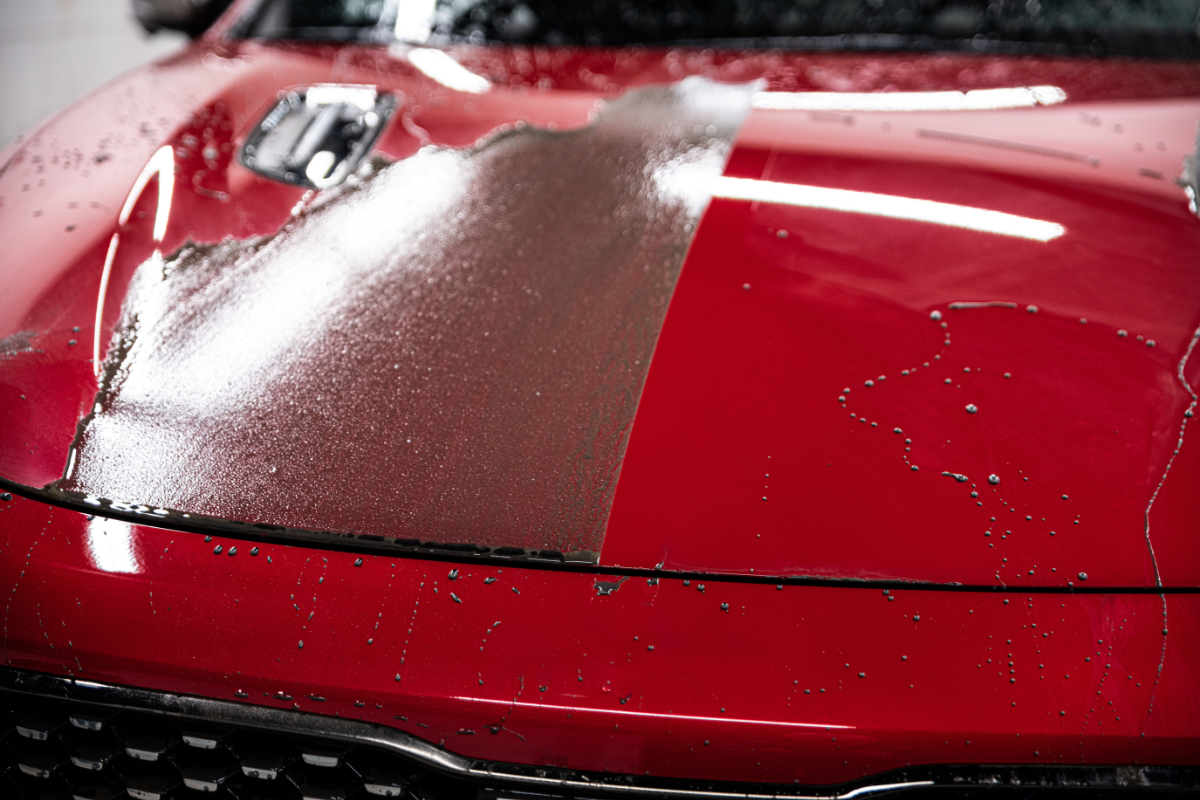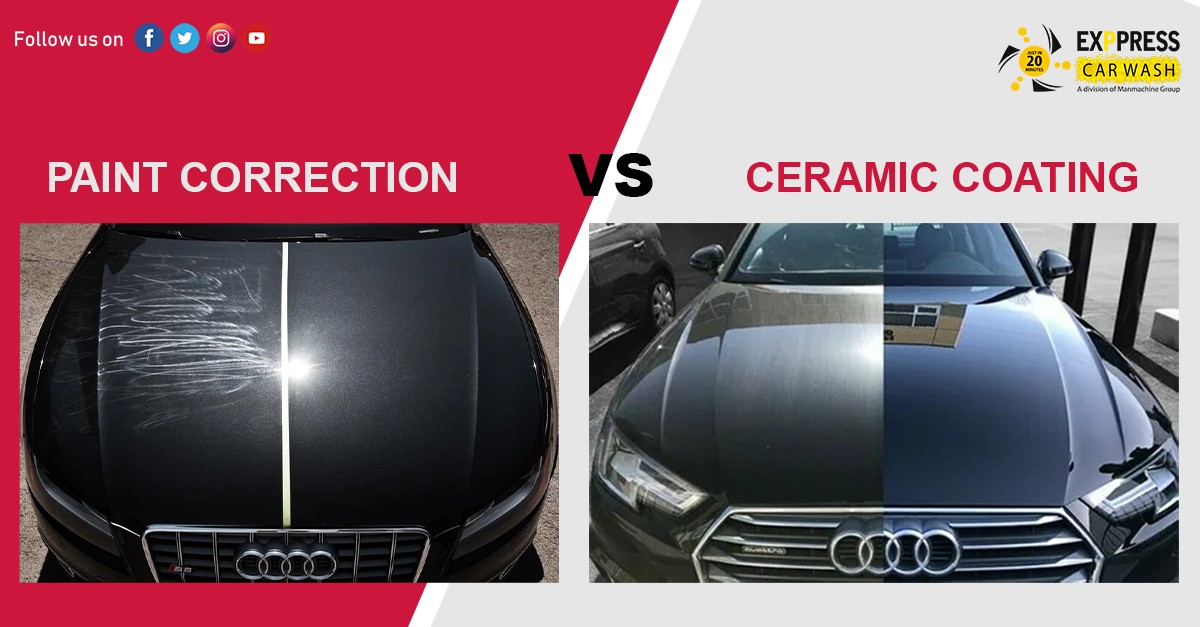Exactly How Ceramic Coating Shields Your Vehicle from Scratches and UV Damage
Exactly How Ceramic Coating Shields Your Vehicle from Scratches and UV Damage
Blog Article
Exploring the Science Behind Ceramic Finish and Its Impact on Automobile Outlining
The application of ceramic coating in cars and truck describing stands for a considerable development in auto treatment, rooted in its sophisticated chemical residential or commercial properties, mainly silica dioxide and titanium dioxide. Recognizing the scientific research behind these products reveals not only the protective benefits they use however also their role in boosting a lorry's aesthetic long life. As we explore the complexities of the application procedure and the lasting implications for vehicle maintenance, it ends up being clear that the choice of ceramic coating can essentially alter one's method to cars and truck care. What considerations should be made before devoting to this transformative service?
What Is Ceramic Layer?
Ceramic covering is a modern-day option that has gotten appeal in the vehicle outlining market for its capacity to offer resilient protection for lorry surfaces. This advanced safety layer is typically made up of silica dioxide (SiO2), which forms a strong bond with the automobile's paint, developing a resilient shield against ecological impurities. Unlike standard wax or sealants, ceramic finishings supply superior resistance to UV rays, chemical spots, and physical abrasions.
The application of ceramic covering includes a careful procedure, where the lorry's surface is thoroughly cleaned and decontaminated before the coating is applied (Ceramic Coating). Once healed, the finishing boosts the automobile's gloss, deepness, and quality, supplying a showroom-quality surface that lasts for years. One of the vital advantages of ceramic covering is its hydrophobic buildings, which drive away water and dust, making maintenance simpler and minimizing the regularity of cleans
The Chemistry of Ceramic Coating
An essential aspect of ceramic finishing depends on its chemical structure, mainly identified by the visibility of silica dioxide (SiO2) This substance is integral to the formation of a resilient, safety layer that bonds chemically to the car's surface. When used, the SiO2 molecules undertake a process recognized as polymerization, wherein they form a network of interconnected frameworks. This causes a robust, hydrophobic surface area that wards off water and pollutants.
In addition to SiO2, several ceramic layers integrate titanium dioxide (TiO2) and various other ingredients to boost their efficiency attributes. TiO2, for instance, contributes to enhanced solidity and chemical resistance. The interaction in between these compounds produces a distinct molecular framework that offers a high degree of defense versus ecological variables such as UV rays, acid rainfall, and oxidation.
Furthermore, the application process often includes a thorough prep work of the surface area to ensure ideal adhesion of the finishing. This chemistry not just makes sure a resilient coating yet also improves the visual charm of the car. Comprehending the detailed chemistry behind ceramic finishes is vital for describing professionals who intend to provide superior defense and long life for their customers' vehicles.
Benefits of Ceramic Layer
While outlining experts commonly highlight the advantages of ceramic finishings, their advantages extend much past aesthetic appeals. Ceramic finishings produce a hydrophobic surface that pushes back water, crud, and dust, substantially minimizing the frequency of laundries and the initiative needed to keep an automobile's why not look here look.
In addition, ceramic coverings boost the durability of the vehicle's finish. Unlike typical waxes or sealers, which might last a few months, ceramic coatings can sustain for several years, providing a lasting solution for car care. This resilience equates to set you back financial savings, as owners are less likely to require regular reapplication.
In addition, ceramic coverings are immune to chemical stains and etching, which can happen from acidic substances like bird droppings or tree sap. This resistance not only preserves the vehicle's looks however additionally minimizes prospective damages - Ceramic Coating. In general, the investment in ceramic layer provides automobile owners a considerable return in terms of defense, ease of upkeep, and long-lasting visual charm, making it a progressively popular selection in the world of automotive detailing
Application Refine Explained

As soon as the surface is sufficiently prepared, the ceramic finish can be applied. It is usually carried out in a controlled environment, such as a garage or outlining bay, to avoid contamination from dust and particles. Using an applicator pad, the specialist applies the finish in little sections, operating in a crosshatch pattern to ensure also coverage. It is vital to follow the supplier's instructions pertaining to application thickness and healing times.
When healed, the ceramic coating creates a solid bond with the paint, offering enhanced security and a shiny coating. Correct application is vital to make the most of the long life and efficiency of the ceramic layer.

Long-lasting Effect On Lorry Treatment
The lasting effect of ceramic coating on automobile treatment is significant, why not look here as it fundamentally changes how proprietors maintain their automobiles. By producing a durable, hydrophobic layer on the car's surface, ceramic layers lessen the adherence of dust, crud, and impurities. This building reduces the frequency of washing needed, inevitably preserving water and cleansing items.
In Addition, the UV security provided by ceramic coatings assists to stop oxidation and fading of the automobile's paint, maintaining its aesthetic appeal and resale value gradually - Ceramic Coating. This protective obstacle likewise decreases the possibility of scrapes and swirl marks, which prevail problems in conventional paint surfaces
Furthermore, ceramic layers facilitate much easier upkeep, allowing owners to cleanse their vehicles with very little initiative. The smooth surface makes it tough for contaminants to bond, making it possible for simpler elimination throughout regular cleaning.
In the long run, the financial investment in ceramic layer may cause cost financial savings in lorry treatment items and services. Generally, the withstanding advantages of ceramic layers not only boost the appearance of automobiles yet additionally contribute to a more reliable and sustainable approach to vehicle maintenance.
Final Thought
In conclusion, the application of ceramic covering represents a considerable development in cars and truck detailing, driven by its unique chemical structure of silica dioxide and titanium dioxide. This innovation not just enhances the visual allure of automobiles however also offers durable security versus ecological risks and use. The long-term benefits, consisting of lowered upkeep frequency and improved resilience, emphasize the value of ceramic finishes as a necessary investment for keeping automobile appearance and integrity with time.

Report this page